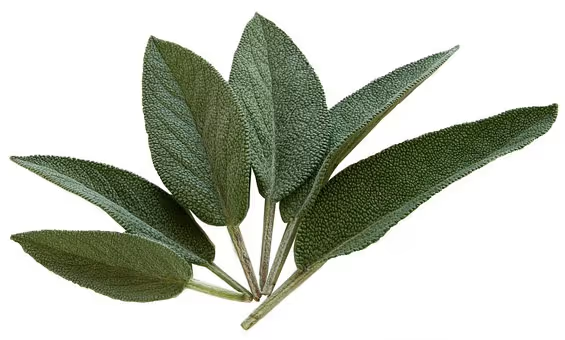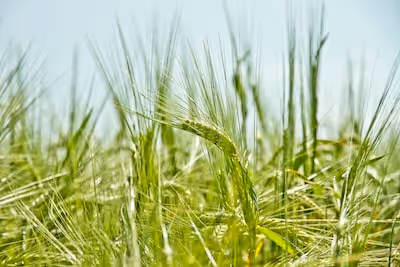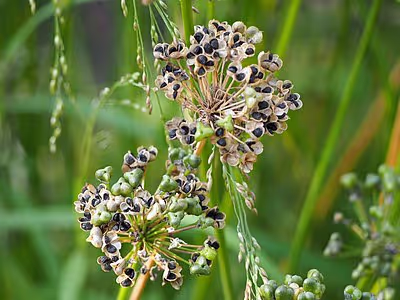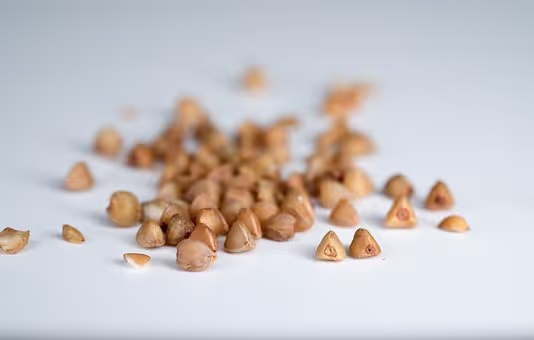Growing Mizuna: How to Cultivate Fresh Superfood Greens
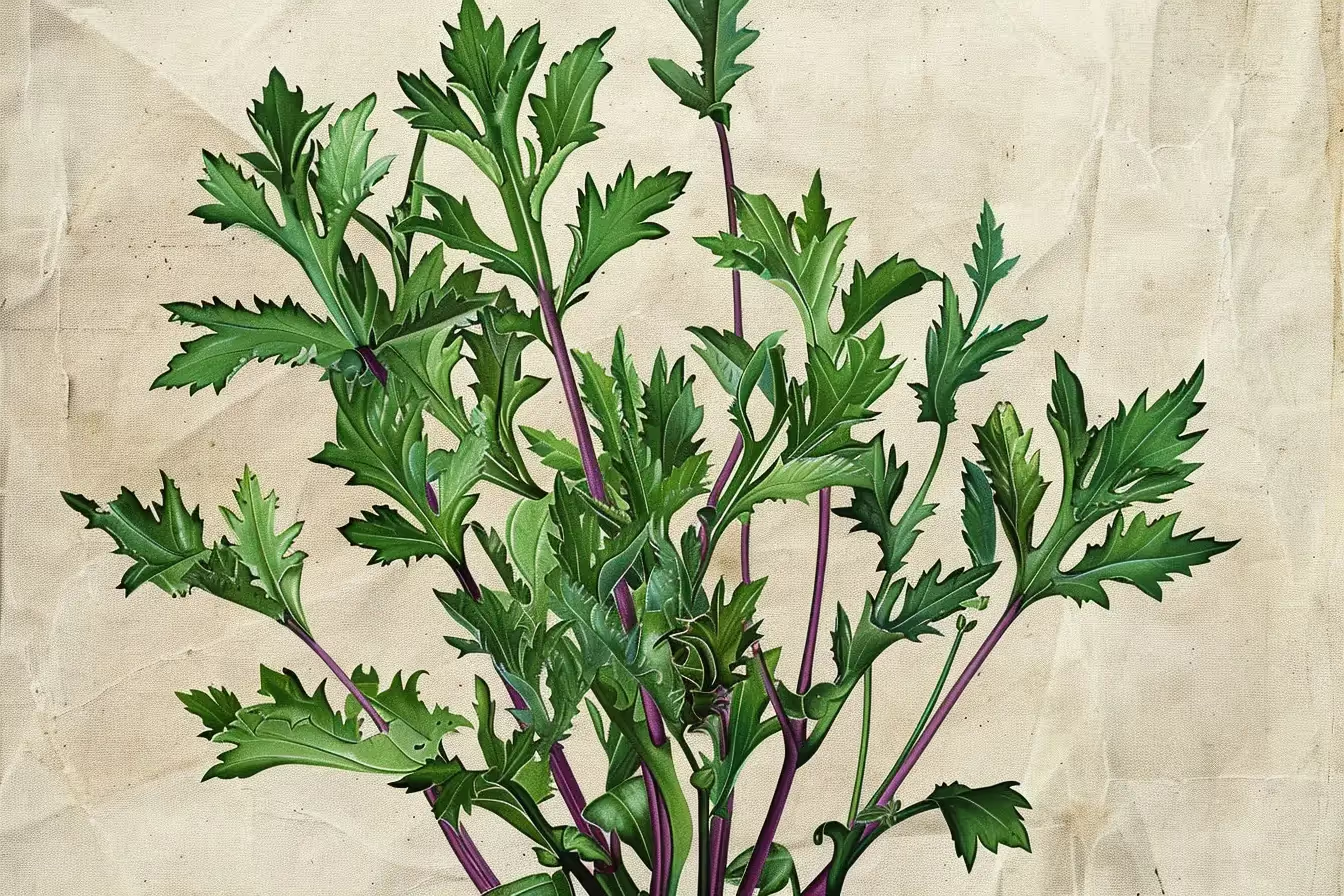
Growing Mizuna
Growing Mizuna gives gardeners a swift path to tasty, nutrient-rich greens in as little as 40 days. This peppery Japanese mustard thrives in cool weather, tolerates partial shade, and sprouts eagerly in containers or garden beds. By growing Mizuna, you'll easily harvest multiple crops each season, filling your salads with vibrant bite and flavor—read on to cultivate this underrated superfood yourself.
Cheatsheet: Fast Mizuna Greens for Nutrient-Rich Salads
🌱 Quick Facts
- Harvest-ready: 21-40 days
- Vitamins: A, C, K; calcium, antioxidants
- Regrows: Up to 6 cuttings
🛠 Tools and products you'll need
- Hand fork
- Watering can or hose
- Seeds (non-GMO mizuna)
- Rich potting mix or loose garden soil
- Fertilizer (organic all-purpose)
- Grow bag, raised bed, or shallow tray (if container growing)
- Sharp scissors (for harvesting)
📅 When to sow
- Direct seed early spring or late summer
- Best at 50–70°F (10–21°C)
- Germinates in 3-5 days
🌤 Sun & soil tips
- Light: Full sun or partial shade
- Soil pH: 6.0–7.0
- Topdress with compost mid-season
- Keep soil moist, not soggy
🧑🌾 Planting steps
- Prepare soil to 6 in/15 cm deep, remove debris
- Sow seeds ¼ in/0.6 cm deep, 1 in/2.5 cm apart
- Cover lightly, water gently
- Thin seedlings to 4-6 in/10-15 cm apart
- Mulch to retain soil moisture
- Fertilize at 2-week mark
✂️ Harvest guide
- Cut outer leaves at 3-6 in/7-15 cm tall
- Regrow for repeat harvests
- Avoid letting plants bolt (turns bitter)
🥗 Nutrition & self-sufficiency
- Low-calorie, high in phytonutrients
- One square foot yields enough greens for 3-4 servings
- Contains more Vitamin C than most lettuce
🐛 Troubleshooting
- Use row cover to deter flea beetles
- Check for aphids; hose off if needed
- Harvest promptly in hot weather to avoid bolting
-
Growing Mizuna: fast, peppery, forgiving
Growing Mizuna sits in that sweet spot where speed meets flavor, with harvests in weeks and a bite that wakes up any salad bowl.
Mizuna is Brassica rapa var. japonica, a Japanese mustard green with frilly leaves that handle chill, shrug at light frost, and keep giving after every cut.
Timing and climate
I sow in cool spells: early spring, fall, and winter under cover, because heat and long days push mizuna to bolt fast.
Ideal growing temperatures land around 55 to 70 F (13 to 21 C), and plants tolerate light frosts down to about 25 F (minus 4 C) with a row cover.
Key numbers: germination 50 to 85 F (10 to 29 C), baby leaf in 20 to 25 days, full size in 35 to 45 days.
Succession rhythm
I sow every 10 to 14 days from last frost to early summer, then again as nights cool, which keeps a steady pipeline of tender leaves.
In hot climates, plant in dappled afternoon shade or under 30 percent shade cloth to stretch the harvest window.
Soil and bed prep
Mizuna thrives in friable soil with steady moisture and a slightly acidic to neutral pH of 6.0 to 7.5.
I work in finished compost at 1 to 2 inches deep (2.5 to 5 cm) plus a light nitrogen source, because leafy greens eat early and often.
Optimal pH for Brassica greens: 6.0 to 7.5 with good calcium availability for leaf quality.
Sowing and spacing
Direct sow 1/4 inch deep (6 mm) with 12 to 18 inches between rows (30 to 45 cm), then thin to 6 to 8 inches apart (15 to 20 cm) for full heads.
For baby leaf, broadcast dense and cut at 3 to 5 inches tall (8 to 13 cm), which speeds turnover and keeps flea beetles less interested.
Transplant option
I start plugs in 128-cell trays for early spring, transplant at 3 to 4 true leaves, and they barely notice the move.
Transplants gain a week on the calendar, useful for squeezing a crop before summer heat.
Watering and feeding
Give 1 inch of water weekly (25 mm), more in sandy beds, and keep it even because drought spikes bitterness and bolting.
A light side-dress with fish emulsion or a 4-1-1 organic feed at week three keeps the color dark and the growth steady.
Light and shade strategy
Full sun in spring and fall grows thick leaves with good bite.
In summer, I use afternoon shade from taller crops or a simple low tunnel with shade cloth to keep leaves tender.
Bolting control
Long days and heat trigger flowering, so sow early, pick often, and re-sow instead of fighting a tired stand.
Choose bolt-tolerant types for late spring, water before heat spikes, and harvest the moment a central stem rises.
Pest and disease playbook
I prevent first, because mizuna grows too fast to chase problems after they explode.
Clean seed, weed-free edges, and prompt harvests do more than any spray in my beds.
Flea beetles
Cover beds the day you sow with lightweight row cover around 0.5 oz per sq yd (17 g per m²), seal the edges, and you will sleep better.
If they sneak in, a quick vacuum at dawn or yellow sticky cards reduce pressure while you finish the crop.
Caterpillars
Look for tiny frass specks and windowpane chewing, then handpick or use a BT spray in late afternoon so it sticks to the leaf.
Lacewings and paper wasps do free patrols if you keep flowers nearby, like alyssum or dill.
Aphids
Blast them with water first, then follow with insecticidal soap, and harvest lightly to open the canopy.
A cool, moving airstream inside tunnels keeps aphids sulking elsewhere.
Slugs and snails
Clear mulch from the crown, set out iron phosphate bait when humidity spikes, and water at dawn, not at dusk.
Board traps work; flip and squish before breakfast, then drink coffee like a champion.
Containers and small spaces
A 12 inch deep (30 cm) window box grows two tight rows of mizuna for snipping all month, and it looks sharp on a patio.
Use a peat-free mix with added compost, and feed lightly every 10 days with a seaweed and fish blend.
Hydroponic and indoor grows
Mizuna behaves beautifully in NFT and deep water culture, with EC around 1.2 to 1.8 mS/cm and pH 5.8 to 6.4.
Give 14 to 16 hours of light at 200 to 300 µmol m² s, and harvest baby leaves in three weeks flat.
Harvest and postharvest
Cut outer leaves as needed or take the whole plant, leaving a low crown for regrowth, which gives a second and often a third flush.
Harvest at sunrise for crisp texture, dunk in cold water at 34 to 38 F (1 to 3 C), spin dry, then store in a lidded box with a towel for 5 to 7 days.
Target wash water 34 to 38 F (1 to 3 C) to lock in turgor and shelf life.
Flavor notes and kitchen moves
Spring leaves taste mild with a peppery whisper, while fall leaves lean sweeter, especially after a light frost.
I toss raw with citrus and sesame, wilt quickly with garlic and miso, or pickle stems with rice vinegar and a pinch of sugar.
Rotation and companions
Rotate away from Brassicas for 2 to 3 years to limit clubroot and flea beetle buildup, and never follow broccoli or radish with mizuna in the same bed.
I interplant with scallions, cilantro, and calendula, which fills gaps and recruits helpful insects.
Yields and market math
My outdoor beds average 0.4 to 0.6 lb per sq ft over two cuts (1.9 to 2.9 kg per m²), with tighter spacing on baby rows tipping the high end.
Indoors under LEDs, I plan 18 to 24 days to first cut and a clean second cut a week later, then re-seed to keep the flavor bright.
Top mizuna varieties and where they shine
- Kyoto Mizuna: classic frill, balanced heat; reliable spring and fall workhorse.
- Red Kingdom F1: burgundy midribs and a wine edge to the leaf; gorgeous for mixed salads and chefs.
- Mizuna Early: quick to baby stage; great for tight successions.
- Komatsuna X Mizuna hybrids: broader blades, silky texture; handles warmth better than fine-frilled strains.
- Tokyo Mizuna: upright habit for clean harvests; minimal grit after rain.
- Shironame: crisp stems, gentle mustard kick; pickling favorite.
- Red Coral types: extra frill and color; slower to bolt under cool tunnels.
Reliable sources include Johnny’s Selected Seeds, Kitazawa Seed, Fedco, and Baker Creek, and I compare days to maturity and bolt tolerance in the catalog notes before I buy.
For late spring, I prioritize bolt-resistant listings and avoid ultra-fine frills that stress in heat.
Gear that actually helps
- Lightweight row cover around 0.5 oz per sq yd (17 g per m²) and simple hoops for instant pest exclusion.
- 48 inch wire hoops or PVC to keep fabric off leaves and let air move.
- Salad spinner set and perforated produce bins for crisp storage at home.
- Soil pH test kit and a bag of garden lime for acidity corrections before planting.
- Fine-mesh sieve or colander for quick triple-wash without bruising.
Common mistakes I learned the hard way
- Sowing once and expecting eternal salads, since mizuna peaks fast and wants a succession plan.
- Skipping row cover, then feeding flea beetles a buffet and losing the crop in three days.
- Overfeeding nitrogen late, which swells tissues and invites aphids.
- Letting beds dry between cuts, which shocks the crown and stops regrowth.
- Packing wet leaves in the fridge and wondering where the slime came from.
Container recipe that works
Mix 3 parts peat-free potting soil, 1 part fine compost, and a small handful of rock dust per 5 gallons (19 L) for trace minerals.
Top-dress lightly after first cut and water with a weak seaweed tea to recharge without burning.
Comparisons and alternatives
- Arugula: faster poke of spice and aromatic bite, bolts quicker in heat; mizuna holds form longer and stays milder.
- Tatsoi: spoon-shaped, buttery texture; grows slower but laughs at cold compared to mizuna.
- Komatsuna: spinach-like chew, better heat tolerance; flavor leans less peppery than mizuna.
- Mustard frills: louder heat and fragrance; mizuna brings nuance and higher versatility in mixed salads.
Overwintering tips
Under low tunnels, I plant in late fall, space wider at 8 inches (20 cm), and harvest leaf by leaf on sunny days above freezing.
A single layer of fabric inside plastic stops freeze-thaw damage and keeps crowns alive to surge in late winter.
Quick troubleshooting
- Tiny shot holes in leaves: flea beetles; cover beds and push the crop to harvest fast.
- Pale new growth: nitrogen short; side-dress and water in before a cool evening.
- Flower stalks forming: heat or age; cut immediately and re-seed in a fresh spot.
- Slimy base after rain: poor airflow; thin plants and harvest earlier in the day.
My field notes
I once picked mizuna during a cold snap at 29 F (minus 2 C), and the leaves perked up after sunrise as if nothing happened.
The same bed in July cracked into flower in a week, which cured me of summer arrogance and sent me back to shade cloth and tight rotations.
FAQs
Can I grow mizuna indoors on a windowsill, yes if the window faces south and stays cool, but expect leggier growth than under LEDs.
Can I eat the flowers, absolutely, and they taste like a gentle mustard with a honey finish.
How many cuts can I get, usually two strong cuts and a small third if water and nutrition stay steady.
Does mizuna cross with other Brassicas, it can cross with Brassica rapa types if flowering together, so separate seed crops widely.
Highlighted data
Sow depth 1/4 inch (6 mm). Row spacing 12 to 18 inches (30 to 45 cm). Water 1 inch per week (25 mm). Harvest baby in 20 to 25 days.
Trusted references worth reading
Royal Horticultural Society guides on salad brassicas outline cool-season scheduling and bolt management for Asian greens.
University extension bulletins from Oregon State, UC ANR, and Cornell cover flea beetle exclusion, row cover specs, and postharvest handling for leafy greens.
USDA FoodData Central lists nutritional profiles for mustard-type greens, reinforcing mizuna’s strong vitamin K, A, and C contribution per serving.
Seed catalogs from Johnny’s Selected Seeds and Kitazawa provide variety-specific bolt tolerance and days-to-maturity data that align with field results.
Frequently Asked Questions about Growing Mizuna
What's the ideal climate for thriving Mizuna crops?
Mizuna delights in a cool climate, thriving best between 45°F and 75°F (7°C-24°C). Hotter conditions accelerate bolting and cause a bitter flavor. Sow mizuna seeds in early spring or late summer, allowing gentle temperatures to coax tender greens to life.
How deeply and how far apart should Mizuna seeds be sown?
Simplicity guides Mizuna sowing. Plant seeds gently, less than a quarter-inch beneath the soil surface; far enough apart—about six to eight inches—to let each plant breathe without crowding. Mizuna dances best with ample room.
What's the watering routine for optimal Mizuna development?
Mizuna craves consistent moisture but resents being waterlogged. Water moderately, letting the top layer of soil dry between drinks but never let the roots parch. Aim for an even rhythm—consistency trumps soaking.
How long until Mizuna leaves are ready for harvesting?
The wait is short and the reward rich. Young, delicate Mizuna leaves take about 20 to 40 days after planting. Harvest tender leaves by snipping with sharp scissors, leaving the base intact to encourage bountiful regrowth.
Are pests or diseases particular threats for Mizuna?
Mizuna enjoys relative peace, yet slugs, aphids, and flea beetles occasionally disturb its harmony. Practice vigilance and pluck pests manually at first sign. If trouble persists, employ organic remedies like neem oil or floating row covers to shield your lush greens.
Can mature Mizuna plants tolerate frost?
Graceful and resilient, Mizuna tolerates moderate frost beautifully. Adults withstand temperatures down to the mid-20s°F, turning sweeter after exposure. Consider cold frames or mulch to extend harvests in chillier climates.
What's the secret for continuous Mizuna harvests through the season?
Success lies in succession planting. Sow new Mizuna seeds at two-week intervals through early spring and fall. Continuous sowing guarantees a steady stream of crisp, nutritious greens, preventing bolting from mature plants and ensuring ongoing abundance.
Growing Mizuna rewards you with peppery crunch and vitamin-packed greens, all for the price of a few seeds and some patience. Give it rich soil and steady moisture, and you’ll be harvesting salad gold in no time. Pick leaves young for tenderness, and don’t be afraid to cut and come again—mizuna bounces back strong. Mix it up with other leafy favorites like kale or swiss chard for variety in your beds and on your plate. If pests show up, a little vigilance and row cover go a long way. In a world full of fussy crops, mizuna keeps it real—fast, forgiving, and always fresh. Grow it once, and you’ll wonder how you ever did without.
The Prepper's Guide to Mizuna: Essential Greens for Self-Reliance
Rapid Growth Advantage
- 21-day harvest: Mizuna matures for harvest in approximately three weeks, ensuring continuous food supply in short growing periods.
- Cold tolerance: Survives temperatures as low as 20°F (-6.7°C), ideal for extended growing seasons.
Nutritional Profile for Survival
- Vitamin-rich: High in vitamins A, C, and K, essential for immunity and wound repair in emergencies.
- Mineral density: Provides iron, potassium, and calcium, supporting overall health during times of limited food diversity.
- Antioxidant content: Contains glucosinolates, beneficial compounds aiding stress resistance and overall well-being.
Practical Storage Techniques
- Cold storage: Refrigerate freshly harvested mizuna loosely wrapped in damp cloth to extend freshness up to 7 days.
- Dry preservation: Air-dry or dehydrate leaves at 125°F (52°C) for 4-6 hours, then crumble into soups or stews for added nutrition.
- Seed saving: Allow mizuna plants to flower, collect dried pods, and store seeds in cool, dark locations for future planting; viability lasts approximately 4 years.
Versatile Culinary Applications
- Raw consumption: Combine tender mizuna leaves with other forageables for nutrient-dense salads during resource scarcity.
- Hearty soups: Add mizuna to broths or stews for a vitamin-rich meal enhancer.
- Preserved greens: Pickle mizuna leaves with salt brine to create nutrient-packed, shelf-stable provisions.
Find out which plants will thrive in your garden!
Answer a few fun questions and get custom plant recommendations perfect for your space. Let’s grow something amazing together!

start your season
